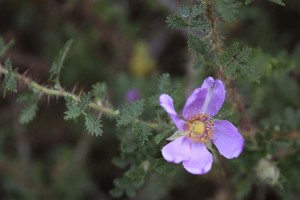I’ve been meaning to mention a piece I read in the local paper a few months back. Dick Streeper, gung-ho local rose grower and one of the founders of the Inez Grant Parker Memorial Rose Garden in San Diego’s amazing Balboa Park, mentioned in his piece how “The world’s leading commercial association of rose producers, All-America Rose Selections, in business since 1939, has recently lost about two-thirds of its members. That has caused a substantial drop in rose sales and a drop in the numbers of good new varieties being introduced. Identifying and buying good, newly introduced roses is suddenly more difficult.”
I wonder, though, if the drop in rose sales actually led to the drop in AARS memberships and not the other way around. There was a point a couple decades back when the splashy hybrid teas and floribundas with their rose-show flower shapes started to get passed over as people seemed to move towards the nostalgic beauties of the David Austin roses, flowers that looked like old roses but had a lot of the modern rose qualities of more reliable repeat blooming and somewhat better disease resistance. Other breeders participated in this renaissance and old timey roses were all over.
It’d be interesting to sales reports for all these plants. I wonder if we, the fickle public, just got tired of them. Or at least we didn’t see anything new and shiny to take their place and stopped buying them in the same numbers. Roses can live for a long time, and really, how many roses do you need to buy in a lifetime? And for fickle gardeners, has there been anything new and exciting to cause us to uproot some of the plants we have?
I’ve mentioned before that I had over a hundred plants in the house where I grew up. My current living situation is down to just one rose. And that one got dug up from its spot in the garden and plopped in a pot this past autumn. It’s one of the plants I planted at my parent’s house in the 1970s and the only plant that I brought with me. I hope it survives the recent transplant. So far so good.

Even that plant is the green rose, a variety dating to the early 1800s and possibly the 1700s. And the last rose I bought was one of our local species Rosa minutifolia (a rose which did not survive an attempted transplant). So you can see I haven’t been doing much lately to support rose breeders…




